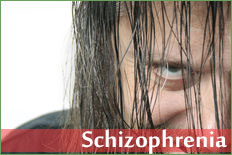Health Centers > Mental Health Center > Mental Disorders > Personality Disorders
Personality Disorders
According to the Diagnostic and Statistical Manual (DSM-IV), a personality disorder is an "enduring pattern of inner experience and behavior that deviates markedly from the expectation of the individual's culture, is pervasive and inflexible, has an onset in adolescence or early adulthood, is stable over time, and leads to distress or impairment." Because these disorders are chronic and pervasive, they can lead to serious impairments in daily life and functioning.
Personality Disorders
- Paranoid Personality Disorder
- Schizoid Personality Disorder
- Schizotypal Personality Disorder
- Antisocial Personality Disorder (ASP)
- Borderline Personality Disorder
- Histrionic Personality Disorder
- Narcissistic Personality Disorder
- Avoidant Personality Disorder
- Dependent Personality Disorder
- Obsessive-Compulsive Personality Disorder
- Personality Disorders: Management
Although the most common etiologies for personality disorders are multifactorial, these conditions may also be secondary to biologic, developmental, or genetic abnormalities. Stressful situations may often result in decompensation, revealing a previously unrecognized personality disorder. Indeed, personality disorders are aggravated by stressors, external or self-induced. Individuals may have more than 1 personality disorder.
Personality disorders are coded on Axis II in the Diagnostic and Statistical Manual of Mental Disorders, 4th edition (DSM-IV). Ten types of personality disorders are grouped into clusters based on similar overall characteristics. There are three recognized personality disorder clusters: odd and eccentric, dramatic and emotional, and anxious and fearful (Table 4-1).
DSM-IV general diagnostic criteria for personality disorders are outlined in Table 4-2. Criteria for individual personality disorders are discussed below. Personality disorders frequently overlap in symptoms.
Cluster A (ODD and Eccentric)
CLUSTER B (Dramatic and Emotional)
- Antisocial Personality Disorder (ASP)
- Borderline Personality Disorder
- Histrionic Personality Disorder
- Narcissistic Personality Disorder
CLUSTER C {Anxious and Fearful)
- Avoidant Personality Disorder
- Dependent Personality Disorder
- Obsessive-Compulsive Personality Disorder
- Personality Disorders: Management
Schizophrenia
A common and serious mental disorder characterized by loss of contact with reality (psychosis), hallucinations (false perceptions), delusions (false beliefs), abnormal thinking
Changes to the DSM
On December 1, 2012, the American Psychiatric Association approved the final diagnostic criteria for the fifth edition of the DSM, scheduled for release in May 2013. The new manual will remove the current system of axes used to class diagnoses into broad groups. It will restructure diagnostic groups to bring disorders that are similar in underlying vulnerabilities and symptom characteristics under the same headings.
Etiology
The origin of personality disorders is a matter of considerable controversy. Traditional thinking holds that these maladaptive patterns are the result of dysfunctional early environments that prevent the evolution of adaptive patterns of perception, response, and defense. A body of data points toward genetic and psychobiologic contributions to the symptomology of these disorders; however, the inconsistency of the data prevents authorities from drawing definite conclusions.
Paranoid personality disorder
A genetic contribution to paranoid traits and a possible genetic link between this personality disorder and schizophrenia exist. Psychosocial theories implicate projection of negative internal feelings and parental modeling.
Schizoid personality disorder
Support for the heritability of this disorder exists.
Schizotypal personality disorder
This disorder is genetically linked with schizophrenia. Evidence for dysregulation of dopaminergic pathways in these patients exists.
Antisocial personality disorder
A genetic contribution to antisocial behaviors is strongly supported. Low levels of behavioral inhibition may be mediated by serotonergic dysregulation in the septohippocampal system. There may also be developmental or acquired abnormalities in the prefrontal brain systems and reduced autonomic activity in antisocial personality disorder. This may underlie the low arousal, poor fear conditioning, and decision-making deficits described in antisocial personality disorder.
Borderline personality disorder
Psychosocial formulations point to the high prevalence of early abuse (sexual, physical, and emotional) in these patients, and the borderline syndrome is often formulated as a variant of posttraumatic stress disorder. Mood disorders in first-degree relatives are strongly linked.
Biologic factors, such as abnormal monoaminergic functioning (especially in serotonergic function) and prefrontal neuropsychological dysfunction, have been implicated but have not been well established by research.
Histrionic personality disorder
Little research has been conducted to determine the biologic sources of this disorder. Psychoanalytic theories incriminate seductive and authoritarian attitudes by fathers of these patients.
Narcissistic personality disorder
No data on biologic features of this disorder are available. In the classic model, narcissism functions as a defense against awareness of low self-esteem. More modern psychodynamic models postulate that this disorder can arise from an imbalance between positive mirroring of the developing child and the presence of an adult figure who can be idealized.
Avoidant personality disorder
This personality disorder appears to be an expression of extreme traits of introversion and neuroticism. No data on biologic causes are available, although a diagnostic overlap with social phobia probably exists.
Dependent personality disorder
No studies of genetics or of biologic traits of these patients have been conducted. Central to their psychodynamic constellation is an insecure form of attachment to others, which may be the result of clinging parental behavior.
Obsessive-compulsive personality disorder
Modest evidence points toward the heritability of this disorder. Psychodynamically, these patients are viewed as needing control as a defense against shame or powerlessness.
How common are personality disorders?
Personality disorders are among the most common of the severe mental disorders and often occur along with other mental illnesses, such as substance abuse disorders, mood disorders (depression or bipolar disorder), and anxiety disorders. It is estimated that 10 percent to 13 percent of the world's population suffer from some form of personality disorder.
Most personality disorders begin in the teen years, when the personality further develops and matures. As a result, almost all people diagnosed with personality disorders are above the age of 18.
Some personality disorders - such as borderline personality disorder and histrionic personality disorder - are more common in women, and others - such as antisocial personality disorder and obsessive-compulsive personality disorder - are more common in men. Many people in prison also have a diagnosable personality disorder.
How are personality disorders diagnosed?
It is important to understand the difference between personality styles and personality disorders. A person who is shy or likes to spend time alone does not necessarily have an avoidant or schizoid personality disorder. The difference between personality style and a personality disorder often can be determined by assessing the person's personality function in certain areas, including:
- Work
- Relationships
- Feelings/emotions
- Self-identity
- Awareness of reality
- Behavior and impulse control
If symptoms are present, the doctor will begin an evaluation by performing a complete medical history and physical examination. Although there are no laboratory tests to specifically diagnose personality disorders, the doctor might use various diagnostic tests - such as X-rays and blood tests - to rule out physical illness as the cause of the symptoms.
If the doctor finds no physical reason for the symptoms, he or she might refer the person to a psychiatrist or psychologist, health care professionals who are specially trained to diagnose and treat mental illnesses. Psychiatrists and psychologists use specially designed interview and assessment tools to evaluate a person for a personality disorder. The doctor or therapist bases his or her diagnosis on the person's description of the symptoms and on his or her observation of the person's attitude and behavior. The therapist then determines if the person's symptoms point to a personality disorder as outlined in the DSM-5.
How are personality disorders treated?
People with personality disorders might not seek treatment on their own; and as a result, many go untreated. One reason for the failure to seek treatment might be that many people with personality disorders can function normally in society, outside of the limitations of their disorder.
Most personality disorders are constant and unrelenting, and very hard to cure. However, treatment can help relieve some of the disturbing symptoms of many types of personality disorders.
Treatment varies depending on the type of disorder, but psychotherapy (a type of counseling) is the main form of treatment. In some cases, medication might be used to treat extreme or disabling symptoms that might occur. Medications that might be used include antidepressants, anti-psychotics, anti-anxiety drugs, and impulse-stabilizing medications.
Psychotherapy focuses on evaluating faulty thinking patterns, and teaching new thinking and behavior patterns. Therapy also aims to improve coping and interpersonal skills.
What are the complications of personality disorder?
Untreated, personality disorders can result in great personal and social costs, including lost productivity, hospitalizations, significant unhappiness, and imprisonment. People with untreated personality disorders also are at risk for alcohol or drug abuse, and violent or self-destructive behavior, even suicide.
Antisocial Personality Disorder
Individuals with ASP repetitively disregard the rules and laws of society and rarely experience remorse for their actions.
Antisocial personality disorder is present in 3% of men and 1 % of women. About half have been arrested; about half of those in prison have ASP.
ASP is more common among first-degree relatives of those diagnosed with ASP. In families of an individual with ASP, men show higher rates of ASP and substance abuse, whereas women have higher rates of somatization disorder. A harsh, violent, and criminal environment also predisposes people to this disorder. ![]()
Obsessive-Compulsive Personality Disorder
These individuals are perfectionists who require a great deal of order and control.
The estimated prevalence is 1 % in the general population. Men are diagnosed with obsessive- compulsive personality disorder twice as frequently as women.
The etiology is unknown, but there may be an association with mood and anxiety disorders.
Individuals with obsessive-compulsive personality disorder are perfectionists. ![]()
Occurrence in the United States
Personality disorders affect 10-15% of the adult US population. The following are prevalences for specific personality disorders in the general population[9] :
- Paranoid personality disorder - 0.5-2.5%
- Schizotypal personality disorder - 3%
- Antisocial personality disorder - 3% of men, 1% of women
- Borderline personality disorder - 2%
- Histrionic personality disorder - 2-3%
- Narcissistic personality disorder - Less than 1%
- Avoidant personality disorder - 0.5-1%
- Obsessive-compulsive personality disorder - 1%
Age-related differences in incidence Personality disorders generally should not be diagnosed in children and adolescents because personality development is not complete and symptomatic traits may not persist into adulthood. Therefore, the rule of thumb is that personality diagnosis cannot be made until the person is at least 18 years of age. Because the criteria for diagnosis of personality disorders are closely related to behaviors of young and middle adulthood, DSM-IV-TR diagnoses of personality disorders are notoriously unreliable in the elderly population.
References
- American Psychological Association. What causes personality disorders? Accessed 4/7/2014.
- The Treatment and Research Advancements Association for Personality Disorder. TARA Education: Personality Disorders Accessed 4/7/2014.
- Merck Manual Home Health Handbook for Patients & Caregivers. Personality Disorders Accessed 4/7/2014.
- Janowsky D. Chapter 30. Personality Disorders. In: Ebert MH, Loosen PT, Nurcombe B, Leckman JF. eds. CURRENT Diagnosis & Treatment: Psychiatry, 2e. New York, NY: McGraw-Hill; 2008. library.ccf.org Accessed 4/7/2014.
- American Psychiatric Association: Diagnostic and Statistical Manual of Mental Disorders, Fifth Edition. Arlington, VA, American Psychiatric Association, 2013. Web. [access date: 7 April 2014].


